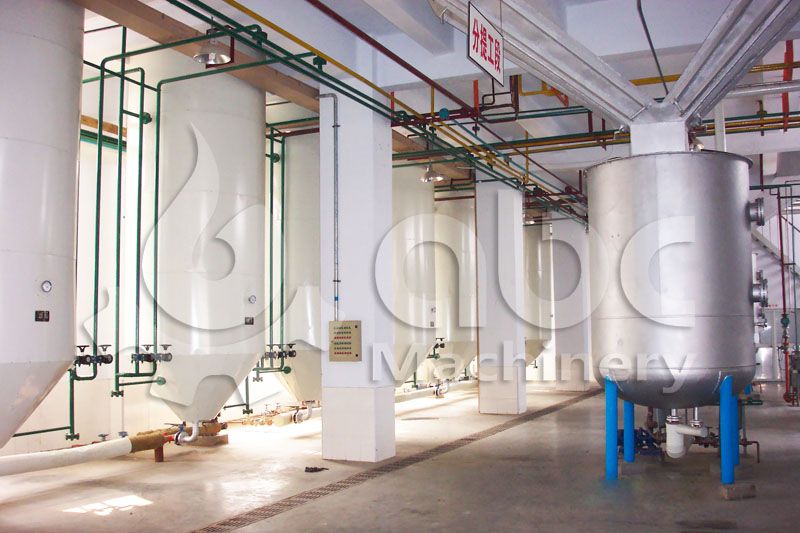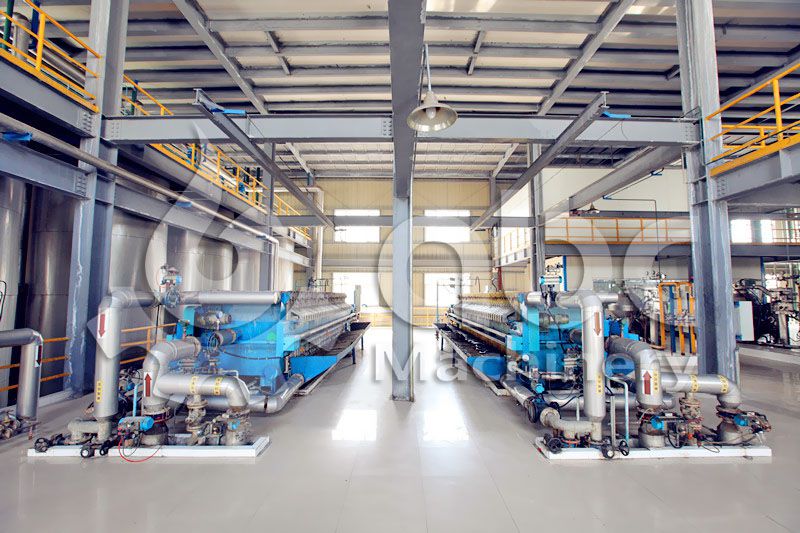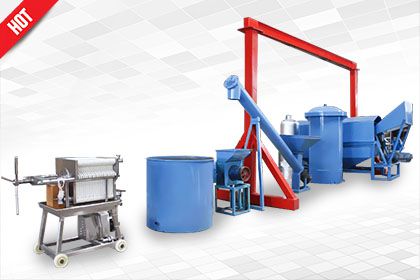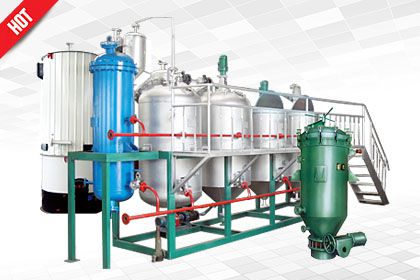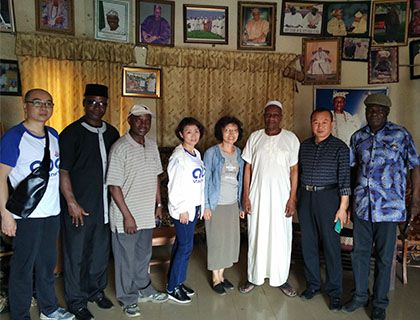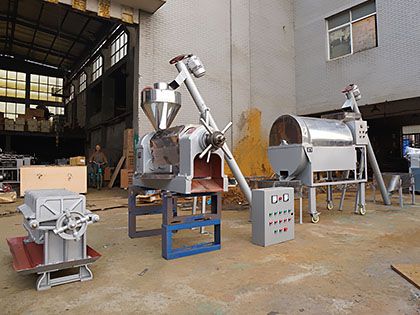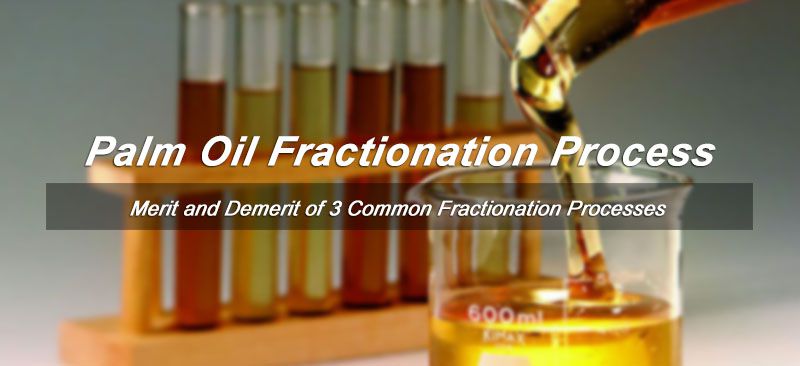
Undertake both small scale palm oil fractionation production line and industrial turnkey project service including process design, equipment supply, electrical and automatic control system, equipment installation, anti-corrosion insulation, process debugging and technical services. (Read more about our small palm oil refining line for 1-30 ton/day production)
The Purpose of Red Palm Oil or Palm Kernel Oil Fractionation
The carbon chain of fatty acids in palm oil triglycerides varies in length and the degree of unsaturation is also different, making palm oil contains a considerable amount of both low melting point and high melting point. Palm oil fractionation is to separate palm oil into low melting point liquid phase (soft fat) and high melting point solid phase (stearin) by control the cooling and crystallizing process. Finally, the palm oil can be divided into 3 components:
- Palm Stearin (melting point around 50℃): Suitable for making margarine and shortening.
- Palm Olein (melting point around 24℃): It is an excellent edible oil.
- Palm Mid-fraction: The melting point of the middle part is narrow and close to the body temperature, which can be used as cocoa substitute fat.
Palm oil is one of the most successfully developed oil products in recent years. It has excellent advantages than other oils and fats in both processing technology and economy. The saturated fatty acids and unsaturated fatty acids in palm oil account for about 50% each, making the palm oil better oxidation stability than other vegetable oils, so palm oil is also widely used as edible oil worldwide. And fractionation is the effective way to make the best use of palm oil. Recently, a complete set of 10 ton/day palm oil fractionation machines were shipped to Cote D'Ivoire.
Three Common Fractionation Processes of Palm Oil
There are 3 common methods used in palm oil fractionation plant: dry fractionation, solvent fractionation and surfactant fractionation. The application of these fractionation methods mainly depends on certain physical and chemical properties of the required stearine and olein, of which the properties of hard lipids should be emphasized. The stearin with different physical and chemical properties can be obtained by changing the methods and conditions of fractionation. At the same time, palmolein with small range of physical and chemical properties can be obtained.
Dry Fractionation of Palm Oil
Dry fractionation process for palm oil production is one of the most economical methods. It refers to the method of slowly cooling the dissolved oil to a certain degree without adding any solvent, and then filtering, separating and crystallizing out the solid ester. Dry fractionation can be divided into three steps: heating, cooling crystallization, and filtering. Generally, fractionation once is enough, while for some industries (such as the confectionery industry) where the requirement for stearin is high, a second fractionation is required.
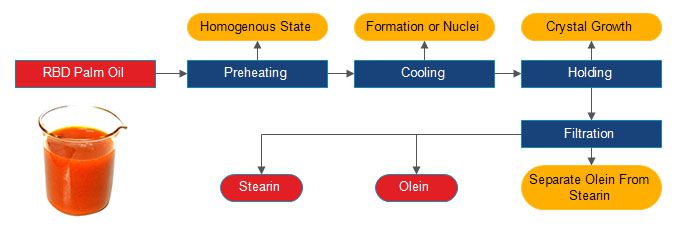
Read more about our small palm kernel oil refining and fractionation plant delivered to Nigeria. The production capacity is 20 ton per day.
Yield of Palm Olein: 70% ~ 75%
Advantages: Among all the three palm oil fractionation processes, dry type palm oil fractionation machine and process has the most promising application prospect. It has the advantages of simple process, high automatic control, low steam consumption, good product quality, no need for centrifugal separating machine, no need for any solvent, and no waste water production.
- Heating
Palm oil is semisolid at room temperature. Palm oil is dissolved in liquid form by steam prior to fractionation processing. It will be heated to about 70℃ before crystallization to destroy all existing crystals. During processing, the cooling crystallization conditions will determine the start of nuclear crystallization, the number of crystals, and the size of crystals.
- Cooling Crystallization
It is the key of palm oil fractionation process. If the crystallization is successful, the separating process will be very easy. Therefore, the design of crystallizer is particularly important. For different types of crystallizers, they should have their own characteristics of cooling exchange surface, cooling system and stirring structure. Cooling efficiency and orderliness are the decisive factors to ensure the unique formation and filterability of crystals. Only in this way can we produce stable, uniform and filtrable crystals.
The operation is to control the cooling process by setting the temperature difference and cooling time between oil and cooling water, to form the crystal nucleus and grow slowly. Stop cooling when the desired temperature is reached (depending on the quality of the desired palmolein, generally around20℃)
- Filtering
It is of course important to control the condition of cooling crystallization. However the selection of filtration equipment also has a great influence on the yield of liquid palm oil. There are three common used filter system for palm oil processing: rotary drum filtr, Florentine continuous belt vacuum filter and membrane filter press. In recent decades, membrane filter press has been widely used in palm oil industry. The hardness of stearin by using membrane filter press is higher, and the yield of palm olein can reach 70% ~ 75%, while it is only 65% by other two filers.
Solvent Fractionation of Palm Oil
Yeild of Palm Olein: 80%
Advantages: Fractionation efficiency is high, and the quality of Palm Stearin is also good.
Disadvantages: Large project investment and high production cost.
It is a method of fractionation in which solvent is added to form a mixed oil system and then cooled, crystallized and extracted. Solvent fractionation can get stable crystallization that is easy to filter, which helps to improve separation effect, increase separation yield, shorten separation time, and improve the purity of the separated product. It is especially suitable for the fractionation of fat with long carbon chain of fatty acid and high viscosity within a certain range.
The method is to let the palm oil dissolve in the solvent, then cool it to a suitable temperature to get ideal crystal. The yield of palm olein can reach 80% commonly. The fractionation efficiency is high, and the quality of Palm Stearin is also good. However, due to the low crystallization temperature and solvent loss, the investment is large and the production cost is high. So used to process high value-added products, such as to get palm mid-fraction as cocoa substitute fat.
Surfactant Fractionation of Palm Oil
Yeild of Palm Olein: 80%
Disadvantages: High cost and the the product is contaminated with surfactant.
It refers to the method of adding surfactant after oil cooling crystallization to improve the interfacial tension of oil and grease. Then form the suspension of fat in surfactant aqueous solution by virtue of the affinity between fat and surfactant, so that to promote the separation of grease and crystal. The yield of palm olein by this process is generally up to 80%. However, it is also costly. Moreover, as the product is contaminated with surfactant, this fractionation process is banned from vegetable oil production in some countries.
Transaction Of Palm Oil Fractionation Machines Cote D'lvoire
